June 4, 2020
 by Kas Szatylowicz / June 4, 2020
by Kas Szatylowicz / June 4, 2020

Have you ever dreamt of your business showing up on the first page of Google?
You probably have – and for a good reason. It’s no secret that acquiring a high position in SERP usually means bringing to your website tons of free and (often) highly qualified traffic. After all, who wouldn't want to pop-up in front of the eyes of potential customers googling their problems if they are able to solve it?
However, with an increasingly competitive market across all industries, climbing the top positions of the Google search is harder than ever. It’s no longer just about having a website that is optimized for keywords or publishing (self-claimed) awesome content.
The currency that Google is paying attention to when choosing which website should rank high comes down to one word: backlinks. They are like gold in the real world; if you have backlinks, you have the power.
In this article we will explore the process of link building in-depth and teach you how to craft an effective link building strategy for your business.
To understand how you can build links for your website, you need to understand first why link building keeps many marketers up at night. We’ll break this down and start from the basics.
In SEO terms, link building is a process of acquiring quality inbound links to a given website. This process is meant to improve the search engine ranking of such a page so that it can be more easily found by the user.
Backlinks pointing back to a website signals the search engine (such as Google or Bing) that this URL is a reliable source of information and, therefore, should be visible and easily accessible to people searching for a particular information.
Acquiring links is a process that can either happen organically (for example people linking naturally to your content) or be carried out purposefully. The latter is what smart companies choose to do when they decide to invest into their SEO strategy to start bringing free traffic to their websites.
Link building is what can help you get ahead of the competition without spending a fortune on advertising.
Truth is, there are plenty of factors determining how well your website will rank in search engines. And there are two main metrics used for “predicting” SERP position of a given URL.
It is a metric developed by MOZ. Domain authority roughly reflects how well the website will rank in search engines. It takes into account several factors, including backlinks, domain age etc. DA has a scale of 1-100 with a higher number predicting the higher ranking.
This is a score originating at Ahrefs. Domain rating relates solely to the strength of a website's backlink profile on a scale of 1 to 100. DR indicates given link’s popularity and estimates the organic traffic the URL could attract.
A word of caution here: remember that both of these third party metrics are not directly impacting your ranking. They are just estimations that tend to be highly accurate (correlation, not causation).
To simplify: the higher your domain authority and domain rating, the stronger is your ranking position and the more credible your website tends to become in the eyes of Google. This, in turn, translates into free, organic traffic coming to your page.
Now that you understand the basics of link building, it’s time to learn how you can actually get inbound, quality links pointing to your website. All strategies outlined work like magic for other businesses and they can also work for you, especially if you combine them with various link building tools.
First strategy we’ll discuss is about replacing broken links pointing to dead websites with links to relevant content on your own site. It’s a simple, but time-consuming process that many dubbed ineffective. However, broken link building can work well if you have the right process in place.
It comes down to a few simple steps:
Sounds simple, right? But the question is: how do you find broken links to replace? Let's go through an actual example to demonstrate it. To speed up the process, we will use Ahrefs and its Content Explorer feature.
Let’s quickly analyze Tidio and its niche: chatbots.
They have a great resource on how to make a chatbot and are looking for links from authoritative websites writing about this topic. All they have to do is search for the keyword, in this case, “chatbots” to filter out websites which created a resource on this topic and have deleted it or moved to another URL.
Here are the settings:
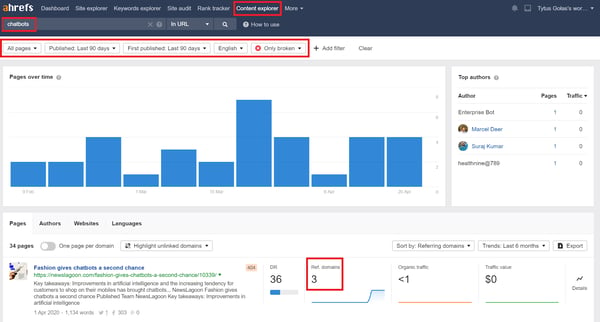
As you can see at the bottom, this about fashion and chatbots has the 404 error which means it’s either been moved or deleted. Additionally, it has three referring domains, meaning three websites linking to it in their own content.
That’s an opportunity to explore. You can check which websites are linking to it and reach out to them asking to replace this link with a link to your own content. Here’s how to easily check the backlink profile of these domains to know in which articles they have linked to this broken resource.
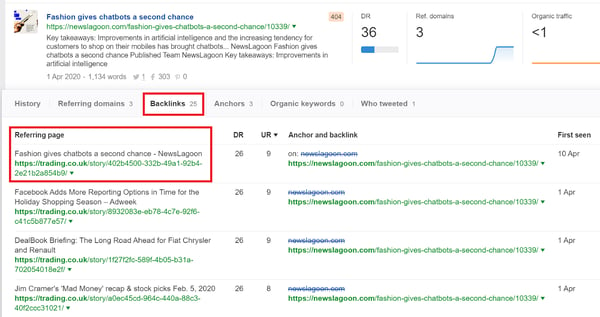
Nobody wants to have broken or dead links on their website which makes it really easy to convince someone to replace them with your own content. Yes, the process is time-consuming, but it’s also scalable and makes up for an easy win (that is if your email outreach is top-notch).
Another wildly popular strategy is publishing guest articles on other reputable blogs. This is a common practice especially in the marketing niche and it’s because it’s fairly simple and it works well.
In fact, apart from just acquiring a valuable backlink in the author bio or content itself, the writer is also gaining more recognition while building his or her own authority. This becomes especially important in the face of Google’s EAT score which stands for expertise, authority and trust. It relates to producing content that’s relevant and useful by people who have proven expertise in a given field.
To build links with guest blogging, follow this process:
You can either do this manually by searching in google for: “relevant keyword” + “write for us” string. For example, if one would want to write for websites related to yoga, here’s what pops-up when typing “yoga write for us”.

You can also modify the search, using other combinations, such as:
And so on. You can also perform similar search using Twitter advanced search or by googling “niche + blogs accepting guest posts”.
Next step in your guest blogging efforts is to find emails or other types of contact details of blogs’ editors or websites’ owners. There are a few ways you can do it:
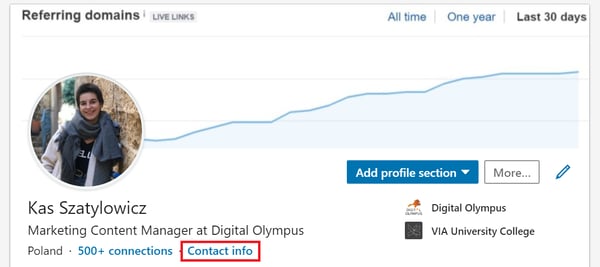
Another step is to reach out to the relevant people who are in charge of guest posts. It’s called blog outreach and it’s a simple (but not easy) process. You have to write a personalized pitch that will highlight why you are a good guest writer candidate.
You can either do it manually or use tools for mass outreach. The advantage of using such tools for cold outreach is that the process is much faster and scalable. However, for many reputable blogs, especially those that don’t openly state they accept guest posts, it’s important that you keep the personalization level high and give up mass outreach.
Finally, it’s the time to write your article, include relevant links and submit it. Remember to attach your author bio and make sure that the links added are do-follow. Voila! You just got your new backlink.
A good idea is to keep track of your guest blogging progress using Google Sheets. Here’s how it can be done:

This is one of the most scalable link building strategies of all times. Taking advantage of the so-called “unlinked mentions” is both fun and super effective. Let’s explore what this is all about.
If you’ve been doing marketing online for some time now, there is a chance that others have noticed. And possibly even wrote about your business or products and services. However, it could have slipped off your radar if they haven’t linked to your website.
In this case, a web monitoring tool comes in handy. Using these kinds of tools can help you find the unlinked mentions of your brand or products and reach out to these websites kindly asking them to link to you.
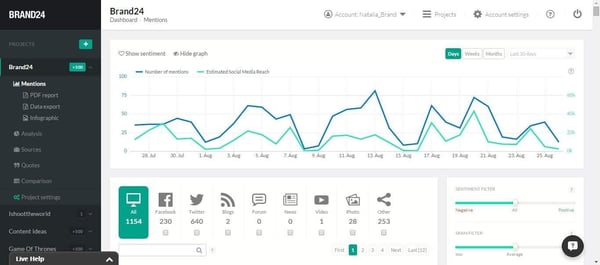
Apart from the particular mentions of your brand, you can also use this strategy to find relevant keywords’ mentions that can be turned into linked mentions to your content. For this you can use Ahrefs Alerts.
Here’s how this looks:

By monitoring mentions of relevant keywords, you can react fast and reach out to the websites that mentioned it asking for a link to your resource. It’s time-consuming, but you’d be surprised to find out how many people are willing to link to excellent content which makes a great addition to their own piece.
Link reclamation is the process of monitoring the links that you’ve lost and trying to get them back.
Link building is hard as it almost always depends on the good will of the other side: an editor or a website’s owner. Building links is really more about building relationships and this is how you should think about it. You can again use an SEO tool to see what links have previously been lost.
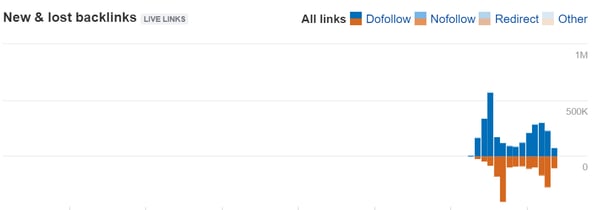
Once you identify them, the next step is to figure out why they were removed – perhaps the website got deleted or there was a content update. To reclaim your links, your best shot is to contact the person responsible for content, enquire about the situation and suggest for them to put the link back. Again, your outreach skills will be what determines your success.
Lastly, a strategy that’s still relatively underappreciated is the creation and promotion of so-called “linkable assets”. This term refers to pieces of content that are valuable enough for people to want to link to them willingly. Linkable assets can include an article with statistics, an infographic with data, a free-to-use tool, or a tutorial.
For example, this article about a newsletter checklist has naturally picked up links. People started to refer to this infographic in their own content related to newsletters.
Take a look at the backlink profile. The article has 16 individual domains linking to their resource, solely because it’s useful.

The same is true for any other piece of content that makes up for a great addition or supporting material, such as articles with lots of gathered data like industry statistics.
For example, Tidio’s article titled “11 Chatbot Statistics and Trends You Need to Know in 2019” (now, updated to 2020) was promoted via Facebook and Google ads just to get people to link to it in their content. Here are the results:

Also, some of their infographics, such as the one below, have been shared and linked to on other websites.
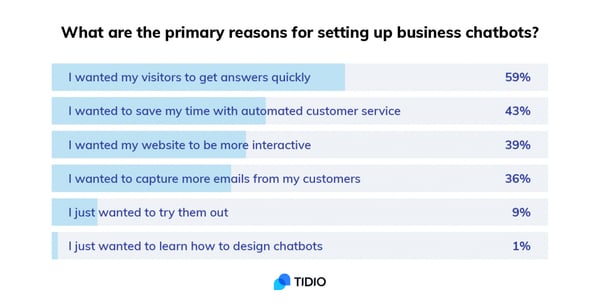
Graphics serve as means to acquire more links, as they are universal enough to be included on every blog. They also boost credibility of the content in which they are linked to – strong writers choose to back up their statements with data.
Tip: Read our chatbot statistics roundup to keep up-to-date on the latest chatbot trends!
Lastly, let’s break down the strategy referred to as a skyscraper technique. Essentially it is a cousin of another strategy used in content marketing called “content gap analysis”.
It’s simple and it consists of a few steps steps:
The reason it is called “skyscraper” is because the technique is based on adding new value to something that already exists and is valuable.
To be effective while using a skyscraper technique, you need to spend lots of time choosing the right content to improve upon, researching ways you can make it better and then contacting people asking to link to you.
To get started, you should spy on the best-performing content of your competitors first. Then produce a more comprehensive piece of content (or simply updated), identify all relevant websites which are already linking to your competitors’ content and suggest to them to change the existing link to yours.
A simple process, yet it takes a lot of work and determination, as you gotta master your research and outreach skills. It’s well worth it, though!
Let’s quickly go over the most common terms used in the context of link-building in the SEO world.
Anchor text is a single keyword or a phrase that is hyperlinked. For best SEO practices, the anchor text should be naturally looking and highly relevant to the content which it represents and links to.
Backlinking is the process of acquiring quality inbound links to a website. Backlinking is used to refer the user or reader to another relevant piece of content or source that supports statements or data in the initial article.
Do-follow links are a kind of link that enables Google and other search engines to follow them to the URL they lead to. It’s the type of link that carries the authority or the so-called “link-juice”. Do-follow links are what should your backlink portfolio consist of.
Domain authority is the metric that measures how strong is the given domain in the eyes of Google. It’s a rough indicator of how well a given website will be ranking in SERP. Unlike DR (domain rating), the DA score takes into account a few factors, not just the backlink profile of a domain.
Simply said, it’s the way in which a page passes the authority to another page. Commonly called “link juice”. It can be either passed via internal links or external (inbound) backlinks.
No-follow links have the rel=”nofollow” attribute. It signifies to search engines that the hyperlink should not be impacting the ranking of the link’s target in SERP. In simplified terms: it tells crawlers to ignore this link.
Referring domain is a term used for websites which link to you, thus directing their visitors to your own URL. You might have a few backlinks coming from the same referring domain (for example from different pages of this domain). The higher number of quality referring domains linking to your site, the better.
There you have it: a short list of five effective link building strategies that you can use to start climbing the search engine rankings.
Here’s the recap:
They will work for any website if executed correctly. Acquiring links should be the top priority of any smart business that wants to start bringing free, organic traffic instead of spending a fortune on paid acquisition channels.
Once you’ve mastered the art of content marketing, it’s time to build links and let Google know that your content is top-notch. Lastly, remember to always stick to the white-hat SEO techniques and avoid buying links or getting them from link farms or PBN.
Kas Szatylowicz is a Content Manager a V7 – AI Vision Platform. She writes about all thing SEO, content marketing, and social media. Follow her on LinkedIn or Twitter!
You just got off the phone with a business partner, and they told you SEO is the only form of...
.jpg) by David Freudenberg
by David Freudenberg
Link building for e-commerce can be challenging, but it doesn't have to be. We all know that...
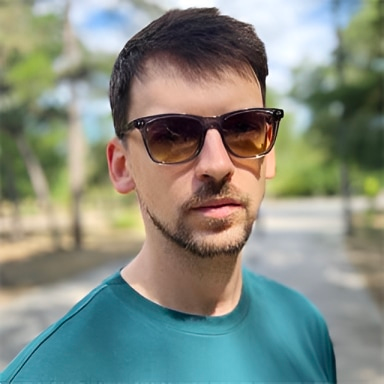 by Igor Gorbenko
by Igor Gorbenko
You just got off the phone with a business partner, and they told you SEO is the only form of...
.jpg) by David Freudenberg
by David Freudenberg
Link building for e-commerce can be challenging, but it doesn't have to be. We all know that...
 by Igor Gorbenko
by Igor Gorbenko



